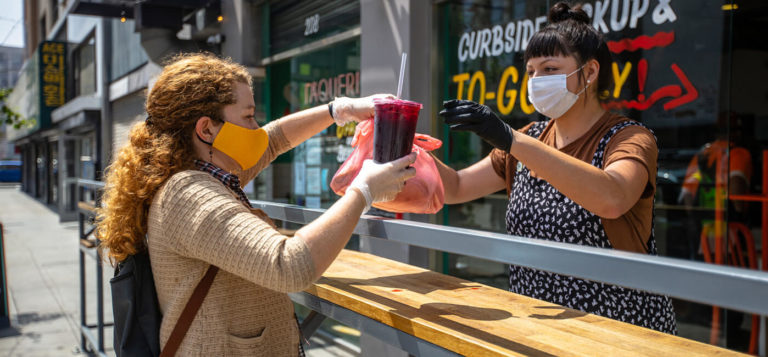Knowing who your customers are is one of the cardinal imperatives of marketing, but consumer demographics and preferences paint an incomplete picture. The key to completing this picture is actual consumer behavior. While data on trends and spends is important, it leaves a lot to be inferred on a store-by-store basis—and that can be overwhelming. Self-reported consumer surveys provide more detail, but these are only as reliable as the recollections of the people who fill them out.
Location data, however, helps us separate signal from noise and contextualize foot traffic behavior in an understandable way. That’s what Marketplace Discovery does: it isolates where exactly a business’s customers go, where they shop and when, providing actual foot traffic and location based on their mobile devices—building a much more accurate and detailed picture of customer behavior.
There are an endless number of ways this information can be used to help marketers better target advertising or to adjust offerings as a result. Here are three.
1. Know Your Real Competition
It’s no surprise that McDonald’s is the biggest fast food brand in the country. So if you were an owner of a smaller chain looking to win some new customers from a competitor, it might make sense to start with the golden arches. But MarketPlace Discovery‘s foot traffic data shows that McD’s customers are really loyal. The harsh truth is that while your customers also eat at McDonald’s, their customers probably don’t eat at your restaurant. Targeting those customers may be a lost cause, but targeting Burger King’s or Wendy’s might prove much more fruitful.
If you know which competitors you have this kind of “trade deficit” with—and, conversely, which competitors’ customers are more open to variety—then you can act accordingly, targeting winnable customers rather than wasting ad spend on those you likely can’t persuade.
2. Know Your Compatible Competitors
Just as important as identifying your competitors is identifying which ones are less competitor and more compatible. In the first quarter of 2016, xAd observed nearly 30 million visits to quick service restaurants across the U.S. and noted that while customers of Subway and McDonald’s rarely venture elsewhere, restaurants like Chipotle, Panera Bread, and Chick-fil-A experience a lot of customer overlap. That means they might not need to win customers at the expense of the other chains.
Think about it this way: if your busy period is lunch and dinner and you found that customers similar to yours frequent coffee shops earlier in the day, you’d have a much clearer idea of who to target when advertising your dinner menu. You could also decide to locate a new restaurant close to a particular coffee chain, knowing that you share compatible customers. Or you could enhance your own breakfast and coffee offering to go head-to-head over those consumers.
3. Know Where Your Customers Really Come From
Knowing that 80% of your customers come from within a 10-mile radius is one thing, but the geographical area that feeds your store with customers is rarely radial or evenly distributed. Discovery includes a heat map feature that shows the other locations your customers frequented within a 60-day period, and it reveals that the patterns of customer visitation are dictated as much by highways and geography as they are by proximity.
Take the Macy’s in Burbank, California, for example. It sits just one block north of a major freeway and yet MarketPlace Discovery‘s heat map shows us that its customers rarely venture south of that freeway. Instead they frequent a roughly L-shaped area bordered by mountains on one side and highways on the others. To put it simply, Burbank Macy’s customers are far more likely to come from two miles to the northeast than two blocks to the south.
That reveals an immediate opportunity to test out a marketing plan. What would it take to tempt those south-of-the-freeway customers to venture north? A 10% discount code? A free gift? Will anything at all persuade Southern Californians to cross a freeway they don’t otherwise have to? The point is, armed with this information, Macy’s marketers can investigate whether that area holds potential for new customers and direct or divert ad spend accordingly. Without that information, they may be wasting money or an opportunity.
Conclusion
Whether you’re looking at how to grow your customer base or how to eliminate wasted ad spend, knowing exactly who your customers are and where they’re going—outside of your own store—is vital information. Having that location data at your disposal means you can pinpoint geographical areas for investigation, testing out ideas for more effectively influencing consumer behavior within them.





